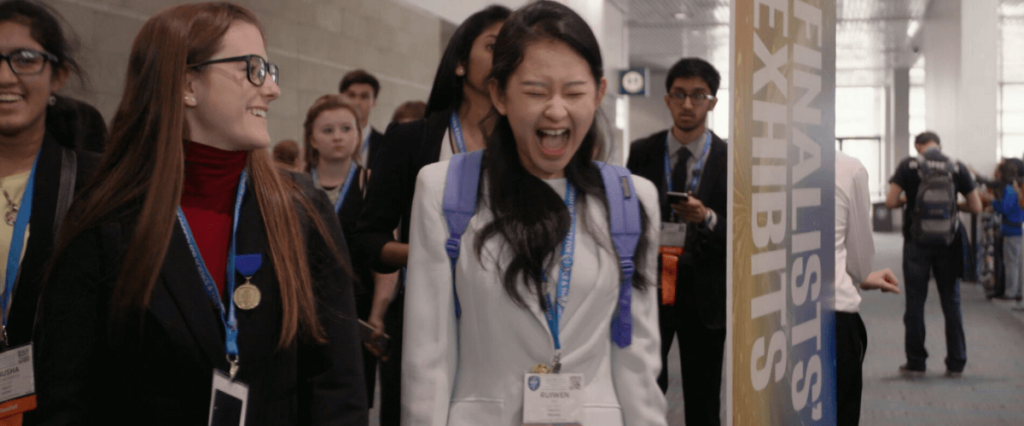“Science fair”: Two very innocuous words. When you hear them, what first comes to mind? Kids presenting their mini volcanoes in an elementary school gymnasium? To be honest, that is what most science fairs are like.
Would you be surprised to learn that there is a science fair in which high-schoolers from all over the world compete in 22 categories for a $75,000 winning prize? There is such a science fair, and it’s called ISEF: the Intel International Science and Engineering Fair. Recently, producers Cristina Constantini and Darren Foster (with National Geographic) made a documentary called Science Fair all about it! I watched it, and I knew in the first five minutes that I had to write a review about it.
Science Fair focuses on a handful of students who are preparing to enter ISEF. We meet kids from poor cities like Iracema, Brazil and wealthy places like Jericho, New York and learn about their projects and their goals. Take Ivo’s project. It’s a kind of drone shaped like a chevron that can fly an amazing distance. Kashfia’s brain wave experiment uses a headset that picks up on brain waves, and uses it to make conclusions about emotions, decision-making and how brains work in general.
ISEF works like this: schools around the world have competitions and choose finalists (one group can count as a finalist) to go on to compete at ISEF. Then, winners are selected in each category, as well as one finalist who receives the top prize of $75,000. As you can imagine, people get really competitive and make some incredible things.
Something I found interesting was the focus on the adults supporting the kids. For instance, at Kendra’s school in New York, there are a lot of resources and a teacher who is really tough and dedicated and pushes her students to do their best. Then in Iracema, at Myllena and Gabriel’s school, there are almost no resources, yet her teachers supported her immensely. And in Brookings, South Dakota, Kashfia’s school was so focused on sports that she couldn’t find any science teachers to supervise her project, and ended up working with the football coach!
What I loved best about Science Fair was how spectacularly engaging it was. I got so absorbed in it that I was super nervous and excited leading up to the judging, even though I wasn’t experiencing it myself. Another thing I liked was how inspiring this documentary was. The main contestants had various obstacles to deal with, from not having a lot of money or resources (Myllena) to having a school that barely gives any support to science (Kashfia). And yet they all made it in, and some of them placed. After the contest, they all continued work on their projects, too. Anybody can succeed, even those with a number of difficulties.
Science Fair, after watching it only once, is my official second favorite movie. Kedi will always be my favorite, but this got pretty close! To everyone reading this, check it out. You may decide to enter a science fair too!
Science Fair (National Geographic, 2018) is a documentary produced and directed by Cristina Constantini and Darren Foster. Find out more at the National Geographic website.

